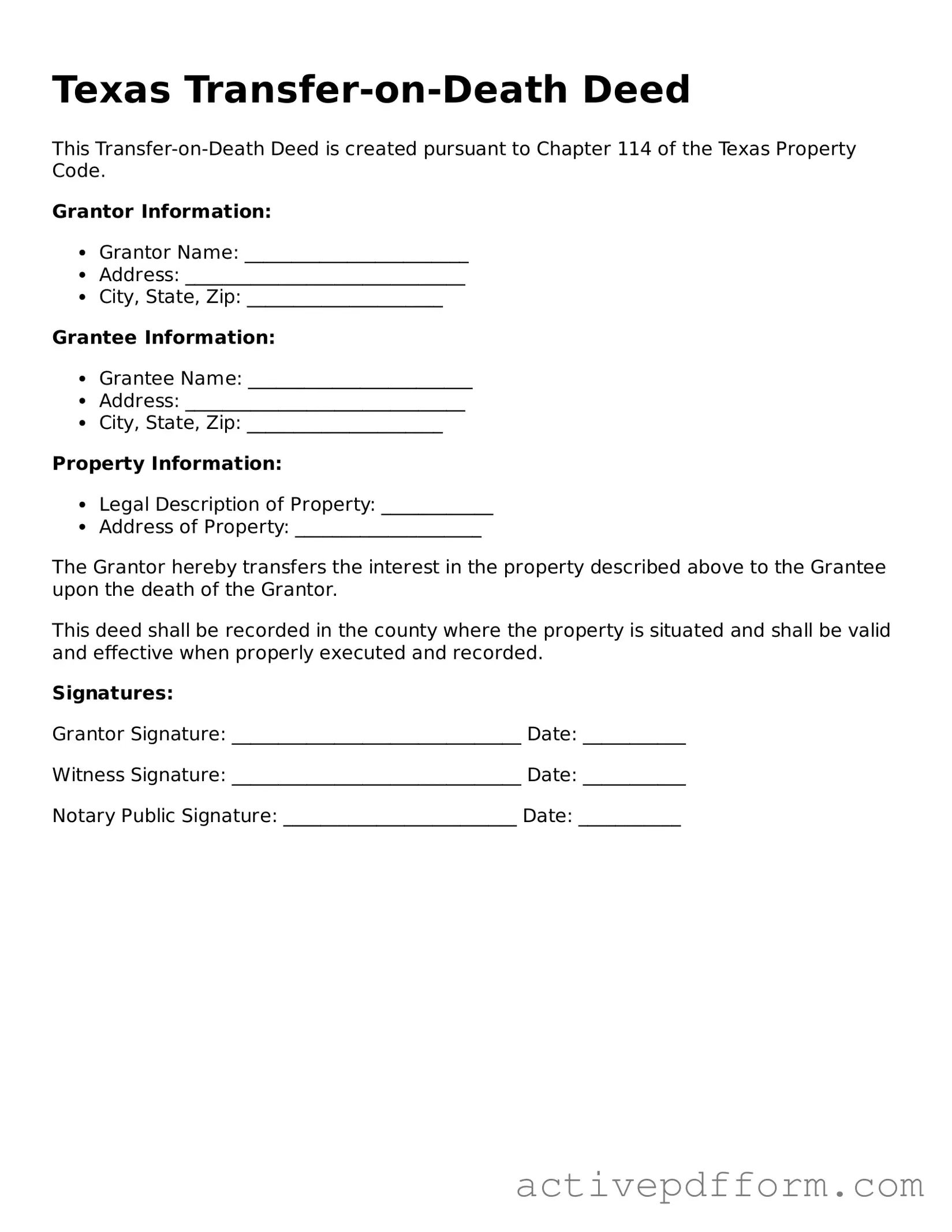What is a Transfer-on-Death Deed in Texas?
A Transfer-on-Death Deed (TODD) is a legal document that allows property owners in Texas to designate a beneficiary who will receive their property upon their death. This deed ensures that the property bypasses the probate process, allowing for a smoother and quicker transfer of ownership to the designated beneficiary without the need for court intervention.
Who can create a Transfer-on-Death Deed?
Any individual who owns real estate in Texas can create a Transfer-on-Death Deed. The property owner must be of sound mind and at least 18 years old. It’s important to ensure that the deed is properly executed and recorded to be legally effective.
How do I execute a Transfer-on-Death Deed?
To execute a Transfer-on-Death Deed, the property owner must fill out the form with accurate details about the property and the designated beneficiary. After signing the deed in the presence of a notary public, the owner must then file the deed with the county clerk’s office in the county where the property is located. This filing is crucial for the deed to take effect.
Can I change or revoke a Transfer-on-Death Deed after it has been executed?
Yes, a Transfer-on-Death Deed can be revoked or changed at any time before the owner’s death. The property owner can create a new deed or file a revocation form with the county clerk. It’s essential to ensure that any changes are properly documented and recorded to avoid confusion later on.
What happens if the beneficiary predeceases the property owner?
If the designated beneficiary passes away before the property owner, the Transfer-on-Death Deed will not automatically transfer the property to the beneficiary's heirs. In this case, the property owner may want to update the deed to name a new beneficiary to ensure a smooth transfer of ownership.
Are there any tax implications associated with a Transfer-on-Death Deed?
Generally, there are no immediate tax implications when creating a Transfer-on-Death Deed. The property remains part of the owner’s estate until death, and the beneficiary typically receives the property at its fair market value at that time. However, it is advisable to consult a tax professional to understand any potential tax consequences for both the property owner and the beneficiary.
Is a Transfer-on-Death Deed the right choice for everyone?
A Transfer-on-Death Deed can be a great option for many property owners who want to simplify the transfer process for their loved ones. However, it may not be suitable for everyone. Individuals with complex estates, multiple properties, or specific wishes regarding how their property should be distributed may want to explore other estate planning tools, such as wills or trusts. Consulting with an estate planning attorney can provide personalized guidance based on individual circumstances.
